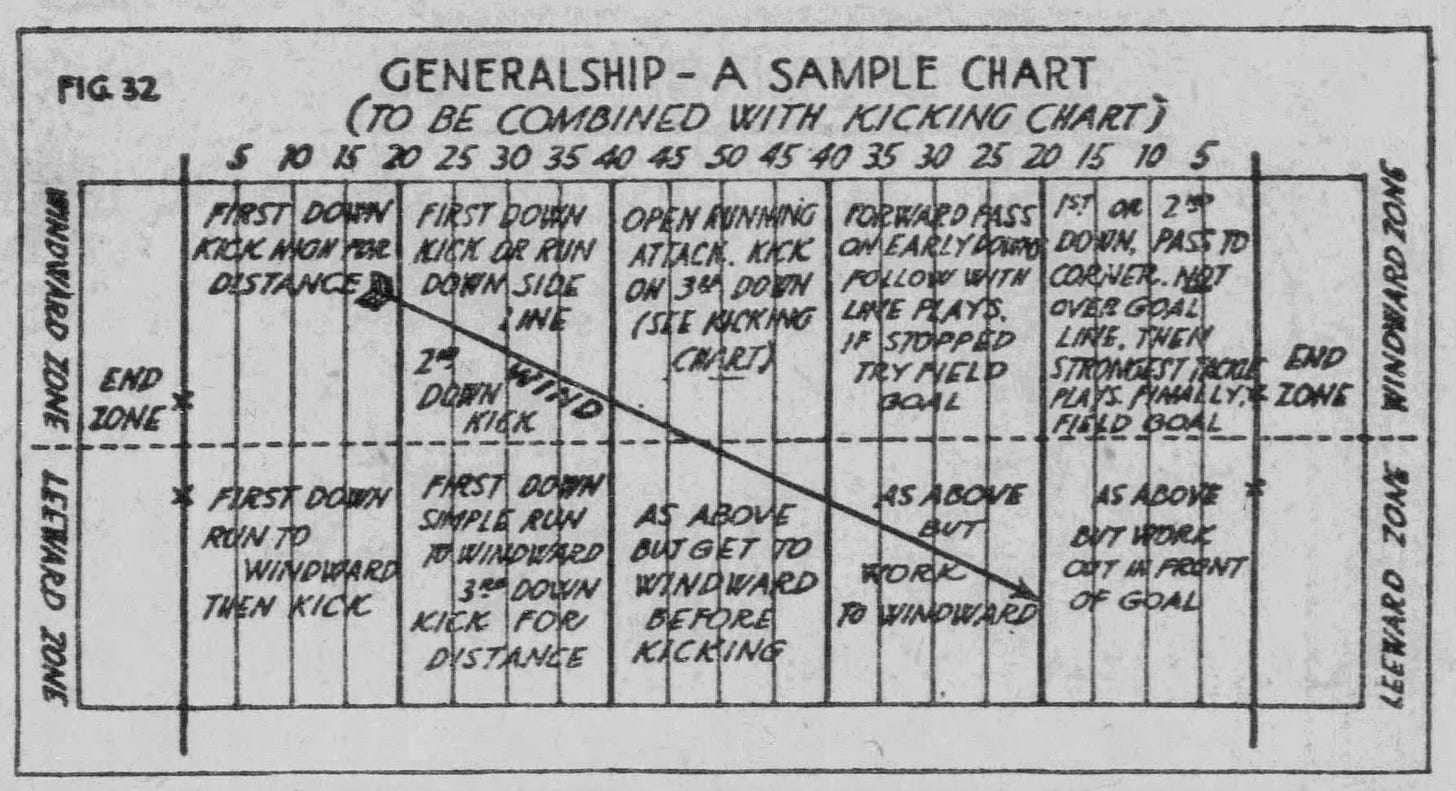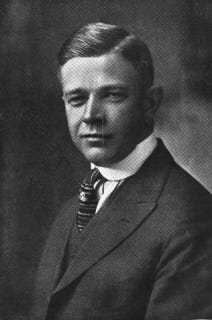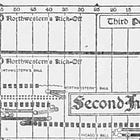Today's Tidbit... Interceptions As Incompletions
As forward passing became more common in the mid-1910s, it continued suffering from football conservatism. An example of conservatism was the general practice of not throwing forward passes until your team crossed midfield. Given the relative unreliability of forward passing at the time, coaches instructed their quarterbacks not to call passing plays in the danger zone. The example chart from 1919 guides quarterbacks not the throw the ball on the wrong side of midfield. In fact, throwing before reaching the 40-yard line was problematic.

The conservative approach was problematic for lighter teams, a term generally used to describe teams at smaller schools that lacked the horses to play the power game. With the onset of the forward pass game, lighter teams had a means of advancing the ball other than by moving the masses, but even they were scared to throw the ball in their own territory.
The problem, of course, was that lighter teams possessing the ball on the wrong side of the 50 had to move the ball into their opponent's territory to take advantage of the forward pass. If they could not run the ball effectively enough to cross the 55- or 50-yard line, they were out of luck.
As discussed earlier this month, one proposal to encourage more forward passing was to limit interception returns, allowing the defense to return them only as far as the original line of scrimmage. However, the rule to eliminate long interception returns and Pick Sixes went nowhere with the 1911 Rules Committee.
Most in the football community accepted the rules as they were, but at least one had other thoughts. Sol Metzger was a prominent and progressive football figure who played for Penn before the introduction of the forward pass and then embarked on a long coaching and writing career. His coaching stops included Baylor, Penn, Oregon State, West Virginia, Washington & Jefferson, and South Carolina, compiling an overall record of 70-43-10 while using the forward pass more than most.

During his tenure at W&J in 1916 and 1917, Metzger was recognized for his team flinging the ball around the park, though even he held back on his side of the 50. Wanting to fling it earlier and more often, Metzger proposed a novel rule in 1916. His idea was to treat interceptions as incompletions. That is, even if a defensive player intercepted the ball, it amounted to an incompletion. So, interceptions occurring on first, second, or third down would mean the offense started the next play from the previous spot, while interceptions on fourth down resulted in possession changing, again with the ball returned to the previous spot.
While Metzger's proposal seemed like an interesting idea on the surface, it violated one of football's core values: the desire for games to be won through scientific play, not chance.
Had the rule been enacted, player behavior would have changed in several ways. One minor change is that defensive backs defending passes on fourth down would no longer need to knock down passes rather than intercept them since interceptions would be returned to the previous spot anyway.
More important, if interceptions became incompletions, passers would make riskier throws. For example, if a defender had tight coverage on your best receiver, the passer might want to thread the ball into the coverage on the chance that the receiver catches the ball.
But that wasn't the real problem. Throwing the ball when the offense had a reasonable chance of catching the ball might have been acceptable. The problem arose when no one was open; passers might toss the ball up, hoping someone on their team would catch it. We see such plays today on Hail Mary passes into the end zone, but Metzger's rule would have encouraged chance passes anywhere on any down. It was a bridge too far, and they quickly batted down Metzger's idea, never again to be thrown out there.
Football Archaeology is reader-supported. Click here to buy one of my books or donate a couple of bucks.




As a proud Jayman (Class of ‘73), I’m always happy to read of the glory days of the Red and Black. Thanks for the shoutout to the Presidents of yore and that Yearbook photo of the team!